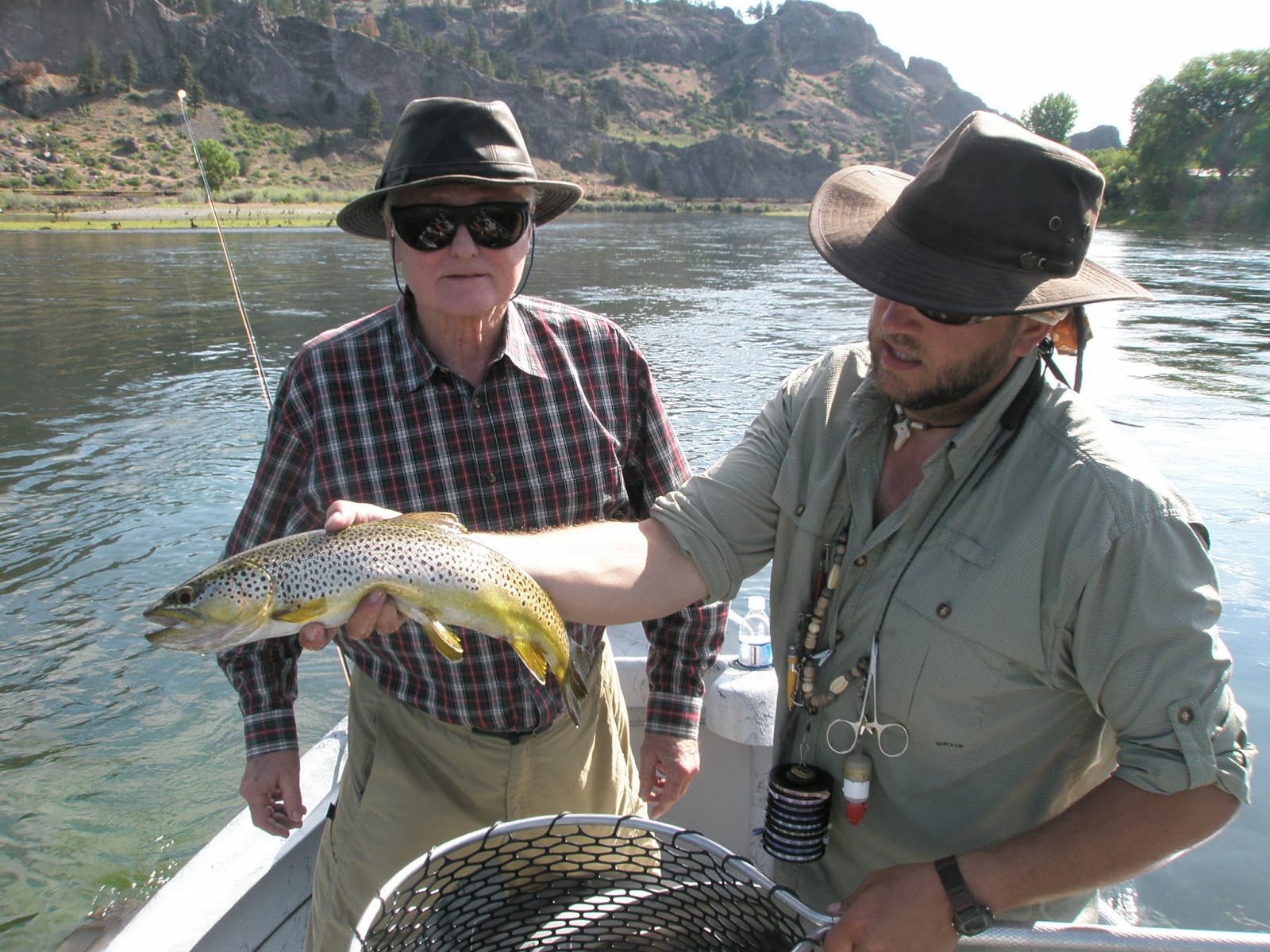Three things that dictate the depth of your nymph rig are weight, length of leader, and water conditions. Obviously, if you have a longer leader, you'll get deeper and if you put more weight on it...yep--deeper. But it's not just getting deeper; it's getting deeper quicker and if you're fishing a faster riffle, that might be something to consider.
Water level and the strength of current has a lot to do with how long your leader is and how much weight you add to the rig to get it down. Sometimes you're fishing grass flats, sometimes slow deep runs, sometimes seems and sometimes riffles. When I first started guiding, I had no idea how to nymph fish. I didn't totally get the relationship between weight and depth and didn't really know how to read it. I had overheard a conversation in the shop that the employee was having with a customer where he said that the general rule of thumb was that the depth of your leader between the flies and the indicator should be about one-and-a-half times the depth of the water you are fishing.
"Ok, but what about weight?" the guy asked. "When should I add a split?"
"Well," the employee said, "You should be deep enough and heavy enough to bump bottom every so often but not get hung up on it every time."
I think that's a really good general rule of thumb and you'll get fish a lot of the time but there are a lot of variations of the nymph rig that can turn a tough day, or even a good day into an epic one.
I first started really thinking about all this in my first season as a guide, sitting at the bar listening to a couple outfitters discussing it. The debate revolved around either lengthening the rig up to gain depth having it ride more horizontal, gently riding the current or dropping a lot of weight and hanging the rig straight down from the indicator. The reality is, is that both work in different conditions.
If you're fishing the grass-flats, you want just enough weight and a little more length so the rig gets down to the grass but then skims over it. If you're fishing hard seems, you may want to shorten it up but drop more weight so the rig drops straight down and rides right on the edge. And there are a ton of conditions in-between.
A year after listening to that "great debate" in the bar, my clients and I sought out shelter in the mouth of a railroad tunnel as this hail storm hit us. As the cloud passed, we walked out to the edge of the bank, still standing on the tracks, and looked down into the seem that was just below us. About a half dozen huge browns were suspended about three feet below the surface gulping nymphs that were either swimming up from the bottom or more than likely, they were bugs that were nocked down and now trapped in the seem. These browns were moving back and forth in the seem just chowing but they weren't really moving vertically.
We shortening our rigs up, added three bb's and rowed up-stream. We slid across the river just up from the seem and got into a good position for my guys to cast in-line with the seem. As we drifted into it the guy in the front hooked up on a huge brown and as his fish dove into the deep pool off the bank the guy in the back hooked up. We slid back across the river into the soft water and landed the fish. Of course, we did it again with similar results and then kept rowing back to that seem until another boat approached.
As the other boat drifted through, they didn't hook up and one of my guys said surprisingly, "Huh, they didn't get anything."
"It's depth and weight," I said. "You're flies are hanging right in front of their noses because it's short enough to suspend at the right depth but heavy enough to sit right in the zone."
"It makes that much difference?" he asked.
"You want to do it again?"
"Absolutely!" he said and with that we rowed back across and educated a couple more.
Keep 'em where they live...


No comments:
Post a Comment